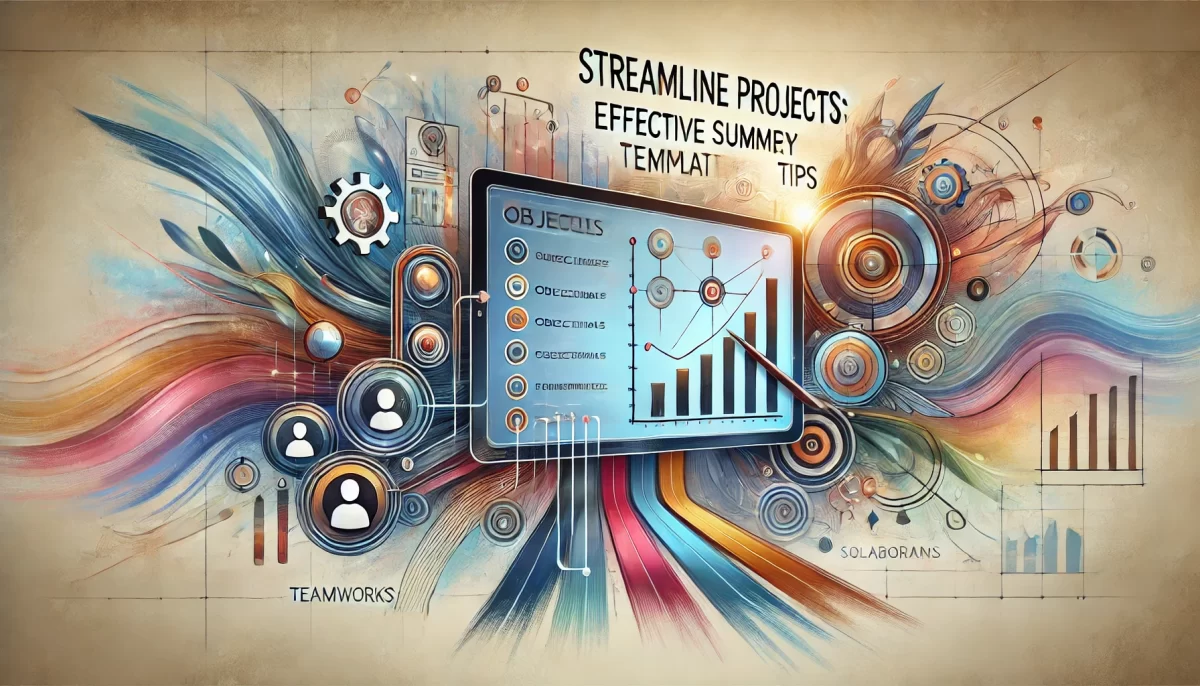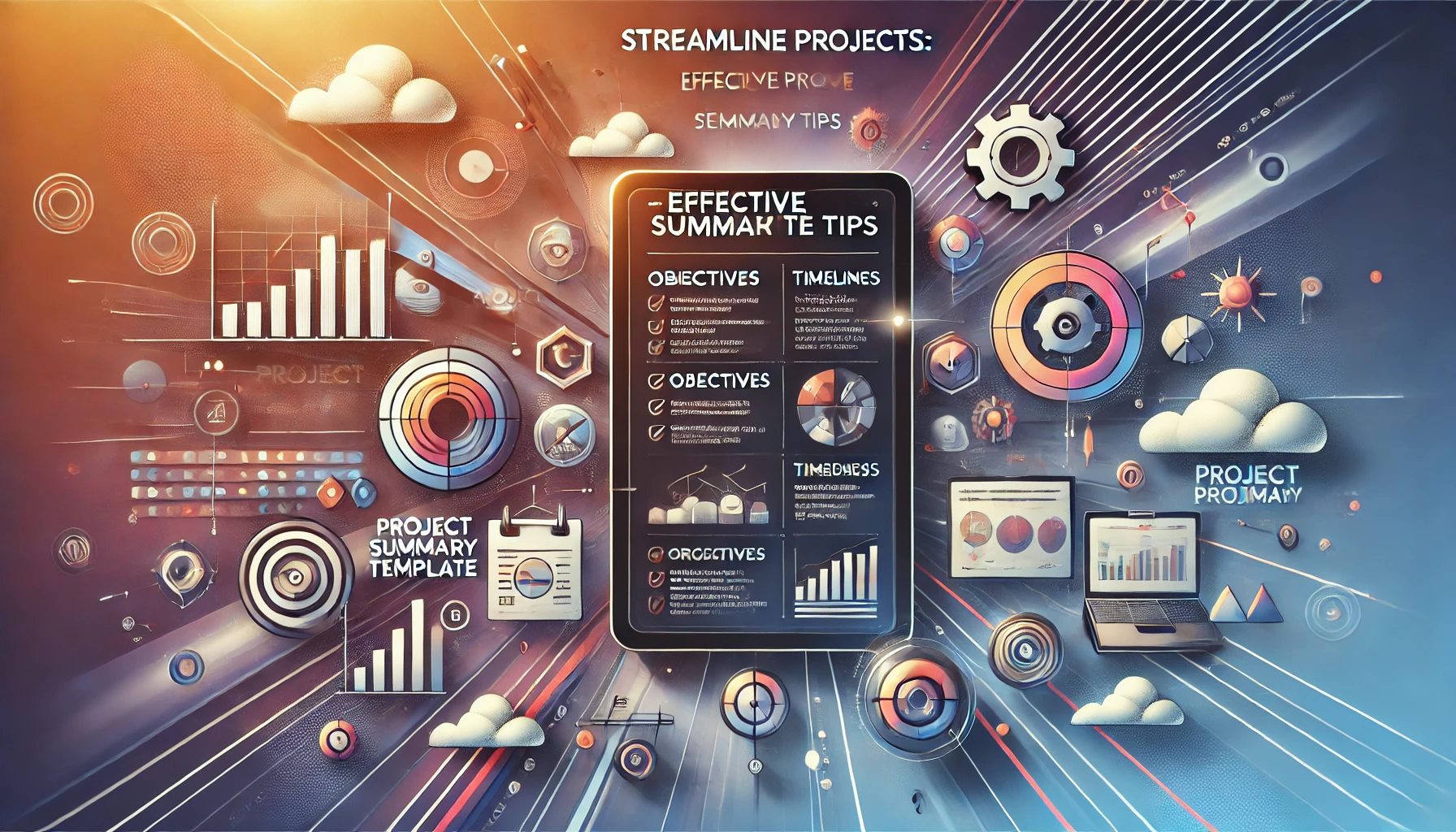Streamline Projects: Effective Summary Template Tips

Managing a project effectively requires clear communication, proper documentation, and structured planning. One of the most powerful tools in project management is the Project Summary Template. This document provides an organized overview of a project’s objectives, scope, timeline, and deliverables, ensuring that stakeholders remain aligned and informed throughout the project lifecycle.
A well-crafted Project Summary Template simplifies project tracking, fosters collaboration, and enhances efficiency. Whether you are working on small-scale initiatives or large corporate projects, this guide will help you leverage project summaries to streamline operations and drive success.

What is a Project Summary?
A project summary is a concise yet comprehensive document that outlines key aspects of a project. It provides an overview of the project plan, highlighting essential details such as goals, background, milestones, and challenges.
A well-structured project summary ensures that all stakeholders, from executives to team members, have a shared understanding of the project’s vision and expectations.
Key Elements of a Project Summary:
- Project Overview – A brief description of the project, its purpose, and expected outcomes.
- Objectives – Clearly defined goals that the project aims to achieve.
- Scope – The boundaries and extent of the project, including what is included and excluded.
- Milestones & Timelines – Major project phases and deadlines.
- Challenges & Risks – Potential obstacles and risk mitigation strategies.
- Deliverables – The final output of the project.
- Project Team & Roles – Individuals responsible for various project tasks.
Who Manages a Project Summary?
A Project Manager is typically responsible for preparing and maintaining the project summary. However, depending on the project size and complexity, other key stakeholders, such as department heads, sales managers, and executives, may also contribute to the document.
Common Roles Involved in Project Summaries:
- Project Managers – Oversee the entire project and ensure alignment with goals.
- Executives & Stakeholders – Review project updates and provide direction.
- Team Members – Contribute insights and progress updates.
- Contractors & Service Providers – Ensure deliverables meet quality and scope requirements.
When to Use a Project Summary?
Project summaries should be used in various phases of project management, including:
- Project Initiation – To outline the project’s objectives, scope, and key deliverables.
- Stakeholder Communication – To provide clear and concise updates to executives and clients.
- Project Execution – To track progress and ensure all team members are aligned.
- Project Closure – To document final results and lessons learned for future reference.
Benefits of Using a Project Summary
1. Improves Clarity & Transparency
A project summary condenses essential project details into a single document, making it easier for stakeholders to understand project goals and expectations.
2. Serves as a Roadmap
A structured project summary provides a clear roadmap for execution, ensuring that project phases progress smoothly.
3. Saves Time & Enhances Productivity
A well-organized project summary reduces unnecessary meetings and back-and-forth communication, leading to improved productivity.
4. Strengthens Decision-Making
By presenting key metrics, risks, and progress indicators, project summaries help managers make informed decisions quickly.
5. Facilitates Better Collaboration
A shared project summary ensures that internal teams and external collaborators remain on the same page.
Potential Drawbacks of a Project Summary
While project summaries offer multiple advantages, they also have limitations:
- Limited Details – A summary does not provide an exhaustive project breakdown.
- Requires Regular Updates – Project details may change, requiring continuous revisions.
- Risk of Misinterpretation – If not structured well, key details may be misunderstood.

Key Components of a Project Summary
1. Introduction
- Project Name
- Project Manager’s Name
- Contact Details
- Start & End Dates
- Executive Summary
2. Project Overview
- Brief description of the project.
- Why the project is being undertaken.
- Expected impact or business value.
3. Challenges & Risks
- Anticipated roadblocks and proposed solutions.
- Contingency plans for high-risk areas.
4. Project Timeline
- Major phases and deadlines.
- Key deliverables and expected completion dates.
5. Deliverables
- List of project outputs (e.g., reports, software, products, etc.).
- Acceptance criteria for completion.
6. Project Team
- Roles and responsibilities of team members.
- Key contacts for specific tasks.
7. Key Performance Indicators (KPIs)
- Metrics for measuring project success.
- Productivity benchmarks and financial estimates.
How to Write a Project Summary
Step 1: Define Objectives
- Establish clear project goals.
- Identify key deliverables and expectations.
Step 2: Identify Stakeholders
- Determine who needs to be informed about project progress.
- Customize the summary to cater to different stakeholder groups.
Step 3: Outline Project Scope & Timeline
- Define what is included and excluded from the project.
- Create a structured timeline with milestones.
Step 4: Highlight Risks & Challenges
- Identify potential issues that may arise.
- Provide mitigation strategies and backup plans.
Step 5: Summarize Key Metrics
- Include financial estimates, productivity metrics, and other relevant data.
- Use charts and tables for easy visualization.
Step 6: Review & Finalize
- Ensure the summary is clear, concise, and accurate.
- Get feedback from project team members before finalizing.
Project Summary Templates
1. Basic Project Summary Template
- Simple format with project overview and key details.
2. Detailed Project Summary Template
- Includes timelines, risk assessment, and KPIs.
3. Executive Summary Template
- Best for stakeholder reporting and decision-making.
For optimal use of templates, ensure you have a reliable productivity tool such as Microsoft Office 2021. You can get an affordable version from RoyalCDKeys.
Final Thoughts
A Project Summary Template is a crucial tool for effective project management. It streamlines project execution, enhances transparency, and ensures that all stakeholders remain aligned. By leveraging this document, project managers can simplify communication, reduce risks, and drive project success.
With the right tools and templates, creating a well-structured project summary becomes effortless. Utilize the templates provided, customize them as needed, and maintain regular updates to keep your projects on track.
Source: How to Use a Project Summary Template for Project Management
Don’t forget to explore our previous post: Accurately Create a Profit and Loss Statement










